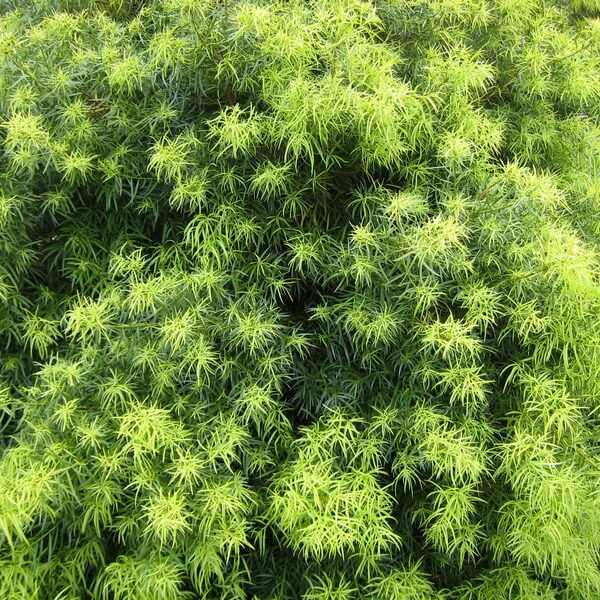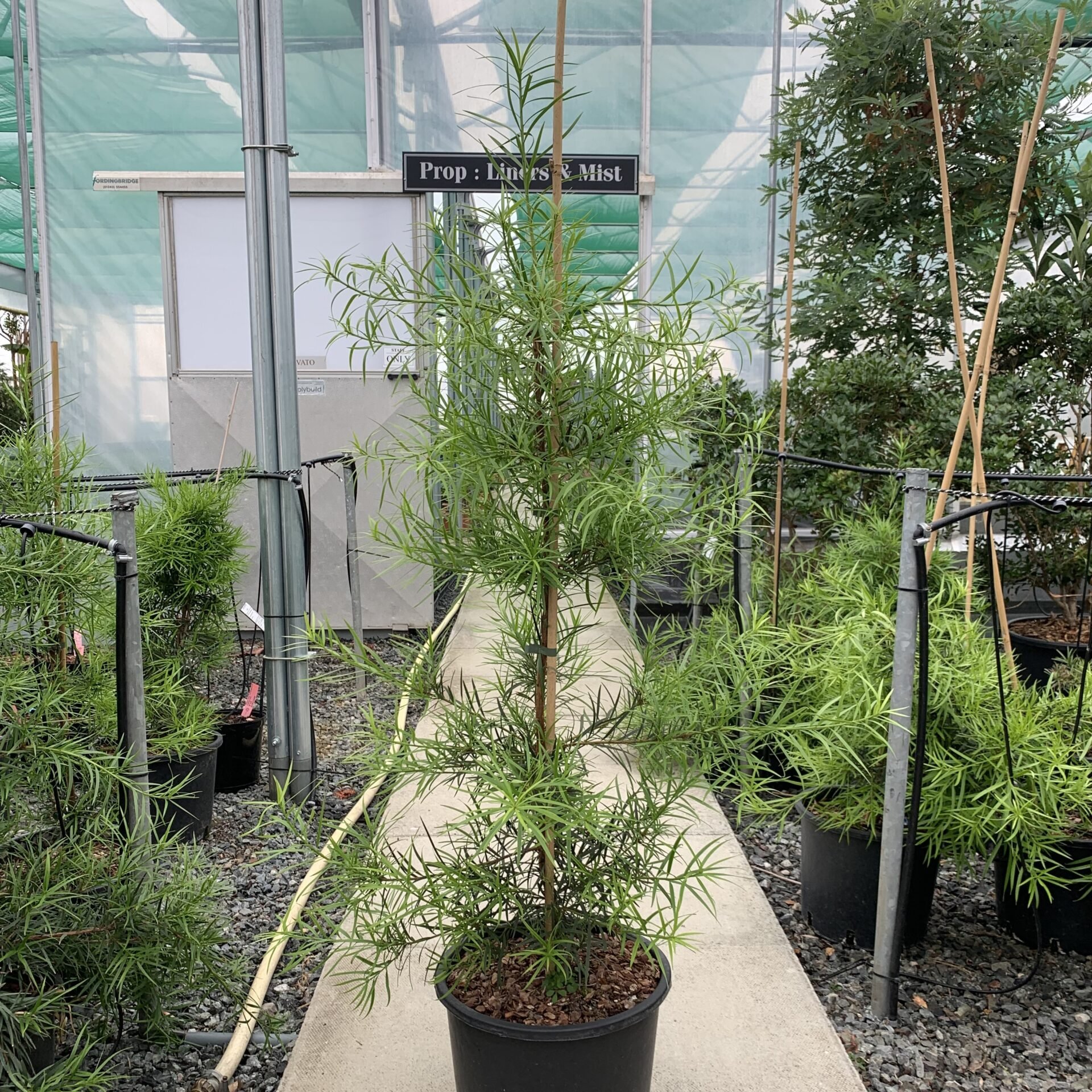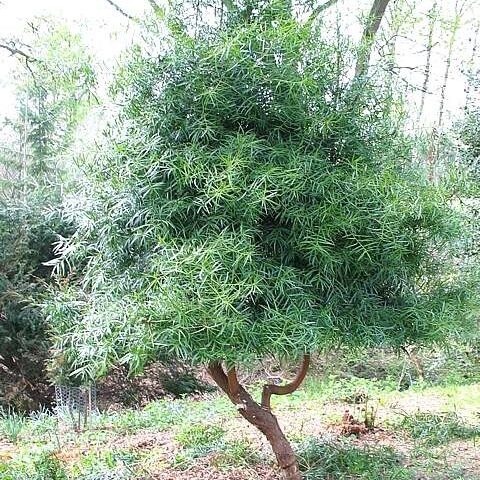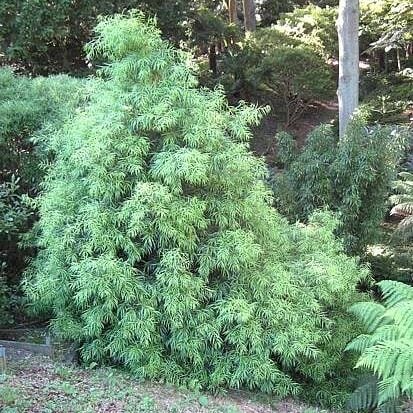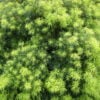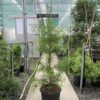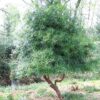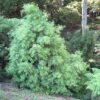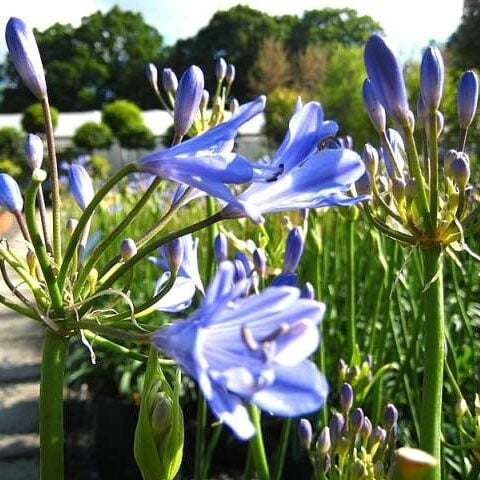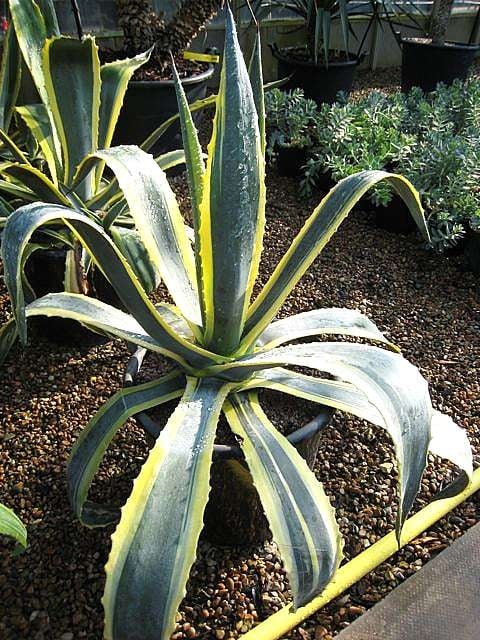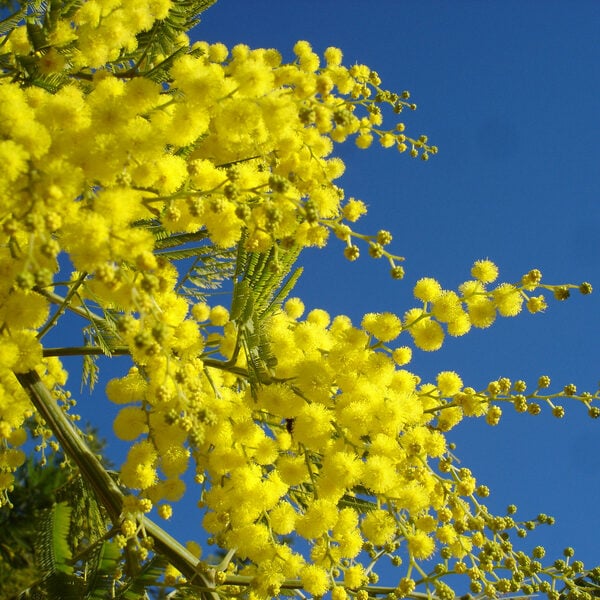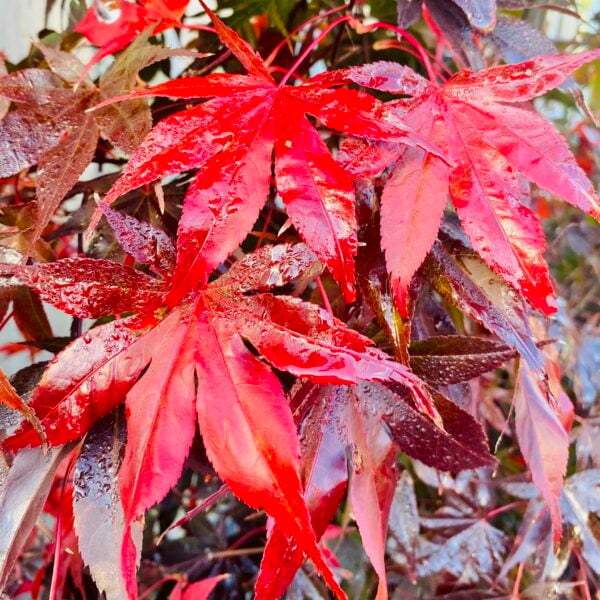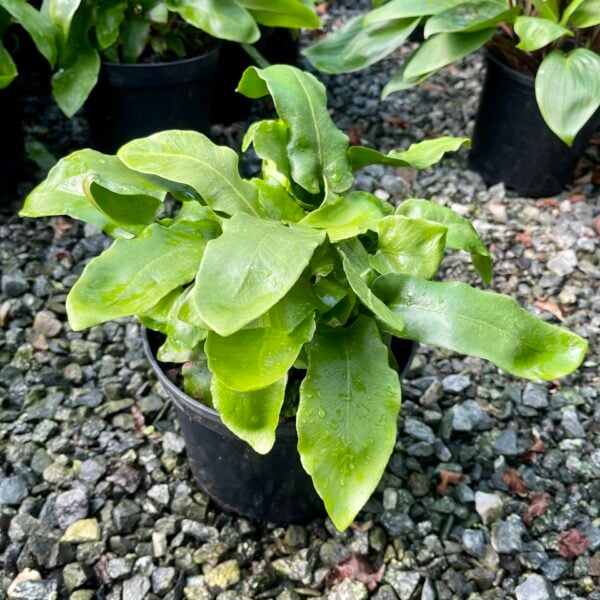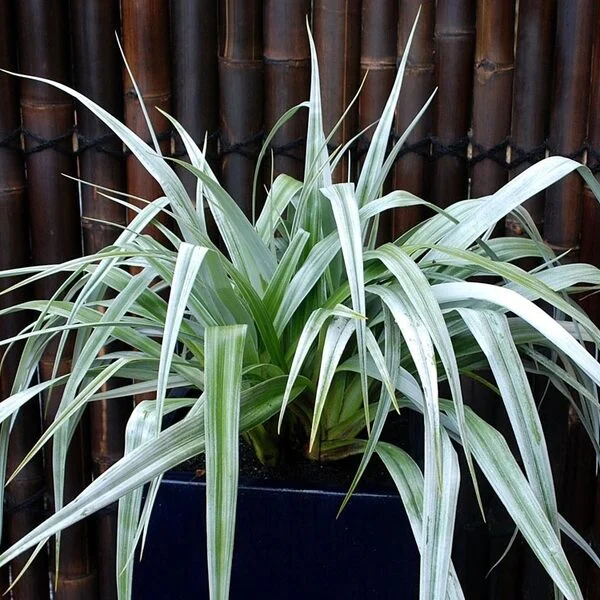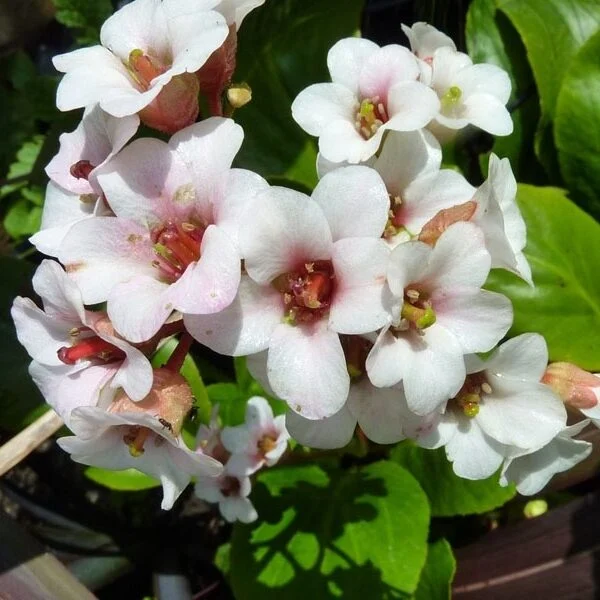Podocarpus salignus (Willow Podocarp)
From Chile. Piles of luxuriant evergreen foliage – there’s nothing else like it. It grows to about 25ft eventually and is essential. Good for hedging if you’re patient. Please contact us for stock availability and sizes.

Hardiness level Green
Slow growing, obscure little conifer from South America. 20ft tall by 15ft wide after 20-25 years. Doesn't sound very exciting does it? It might not sound very exciting but if there's one plant that Architectural Plants Ltd owes its existence to - this is it.
Around the summer of 1985 I was undergoing a period of discovery. The discovery of wonderful plants from around the world that would grow in Sussex and for reasons best known to itself, the British Horticultural Industry spurned and ignored. I was trespassing in the abandoned garden of South Lodge (later to become South Lodge Hotel) in West Sussex, exploring the hopelessly overgrown delights when I encountered one of the most beautiful sites I'd ever beheld. Soft, exotic, slightly pendulous, dense, shapely with a beautiful trunk and branches covered in a soft reddish bark. I still remember the flood of emotions : love at first site followed by despair that I might never be able to work out what is was, followed by mild fury that I and every one else didn't know what it was because they jolly well should because everyone should have one, followed by mild elation at the discovery that there was one of those old zinc heart shaped labels hanging from a branch followed by more despair because the label was blank followed by heart palpitations and profuse sweating because if I held the label at the right angle, letters could be seen - barely, barely visible. What is it? What is it? PODOCARPUS. Podocarpus? Podocarpus?
Podocarpus salignus from Chile - a conifer vaguely related to our native Yew. The Willow Podocarp (nothing to do with willows). One of the great things about evergreens is the contrast between the old foliage (often dark green) and the new foliage (often pale green). Everyone likes this plant (despite the historical preferences of the British Horticultural Industry) but when the small plants on the nursery have the lovely combination of new and old growth in June, they sell like those famous hot cakes.
When we started the nursery, propagation of this tree was a problem. We took cuttings from the plant at (what was by then) South Lodge Hotel (with their cahoots, of course) but the plants we produced behaved like branches and grew along rather than up. Not so good. We occasionally managed to get seed from South America but it's considered endangered in the wild so even this source dried up. Fortunately we discovered a garden in Cornwall where they had so many, they strimmed the seedlings. Annual pilgrimages were made to this secret location for many years. Eventually, we had so many established at the old nursery in Nuthurst that we became self sufficient in Podocarpus salignus seedlings.
N.B. When clipping several plants with the same tool, have a bucket containing a 5% bleach solution and swish your blades around for 30 seconds between plants to sterilise them. This will help avoid the chance of cross contamination of disease.
As with all woody plants, plant high, exposing as much of the taper at the base of the trunk as possible. Allowing soil to accumulate round the base of a tree can be fatal. Keep very well watered when first planted.
Additional Information |
|
|---|---|
| Soil Type | |
| Light | |
| Plant Type | |
| Continent of Origin | |
| Specialist Plants | Grown by Us, Japanese, Niwaki, Rare & Unusual (Collectables), Topiary, Balls and Blobs |
| Features | |
| Tree Size | |
| Situation | Coastal, Mild City Gardens, Plants for Pots, Sheltered Garden |
| Hardiness | |





